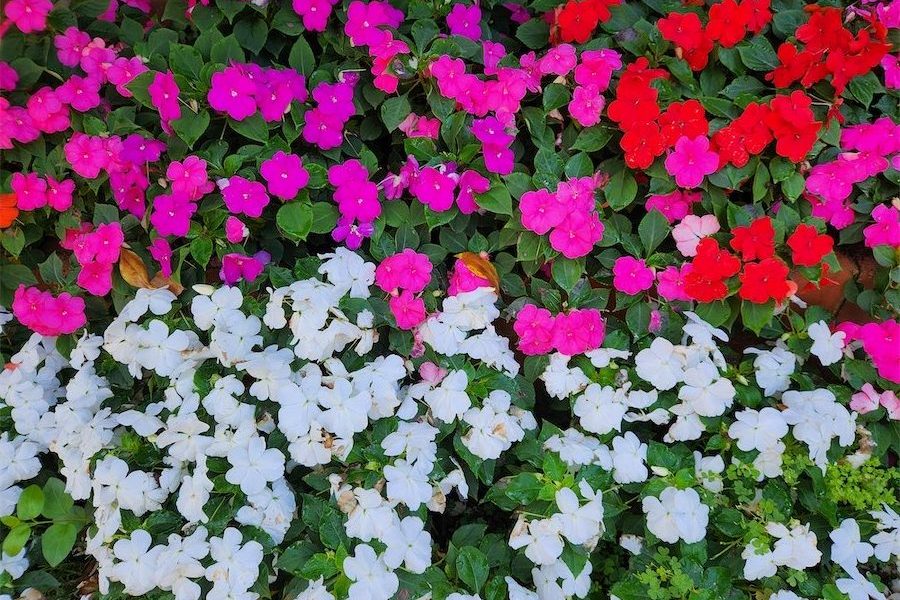WHEN driving past Canberra Airport one cannot but be impressed with the high standard of landscaping. In particular, at present, the brilliant colourful display of Lagerstroemia indica or Crepe Myrtle, of which many readers have drawn to my attention.
Crepe Myrtles were originally considered an autumn flowering plant. Whether it is climate change or global warming that has affected the change, but these wonderful plants now flower in mid-to-late summer. They have so many great attributes besides the flowers. With a stunning display of yellow, orange and red leaves in autumn followed by a peeling bark of grey, pink and cinnamon tones in winter.
Crepe Myrtles originated in China and Korea and were first introduced into Western gardens in 1759 by that intrepid plant hunter, Robert Fortune.
Dr Peter Valder, in his excellent reference book “The Garden Plants of China”, states that “these have been cultivated in Chinese gardens for centuries. During the Tang Dynasty they were planted extensively in the Emperor’s Palace. Crepe Myrtle appeared in Chinese paintings from the 16th century. It is also known in China as ‘Hundred Days Red’ due to its long flowering period”.
In China, the branches were severely pruned each year in winter as the flowers only appear on the new season’s wood. This is equally applicable here and frequently folk say to me: “It flowered well in the first few years and, while continuing to grow, has had hardly any flowers since”.
So a winter task after the leaves fall and the sap has stopped flowing is to cut them back hard. Crepe Myrtles are used increasingly as street trees as evidenced if one is travelling on the Windsor road through Penrith. Or closer to home in the main street of Queanbeyan. Maybe inter-planted between the monotonous eucalyptus in Belconnen for instance.
The idea of planting more exotic flowering trees in Canberra was actively promoted by former Chief Minister Jon Stanhope. He was recently quoted as saying, in government, he had asked for more exotics, “although it was always as though I was suggesting something completely outrageous!”
TODAY there are many varieties of Crepe Myrtles from the dwarf French varieties to taller growing ones. Some of the best are grown by Fleming’s Nurseries with their Indian Summer Series. These are named after North American Indian Nations such as Lagestroemeria indica x fauriei “Sioux”. This is a vase-shaped strong upright small tree to 4m x 3m with masses of intense, hot-pink flowers. Or L.i.x fauriei “Tuscarora” of a similar size with dark, coral-red flowers. L.i. “Natchez” is a taller variety growing to 8m x 6m with pure-white flowers set against dark-green leaves. These are just a few to tempt you, but the only way to choose is to see the extensive range now in flower at your local garden centre.
CHARLES Weston was responsible for planting more than two million trees and shrubs in Canberra from 1913 to 1926! In 2011, the National Capital Authority planted an Arizona Cypress to commemorate 100 years since Weston first visited Canberra.
Many of the trees he planted are now nearing the end of their life and, like the elderly, now need some loving care and attention. Do you consider just $7 spent annually on each of our street trees and in urban parks is sufficient? This includes all aspects of tree care from pruning potentially dangerous dead wood from older trees, formative pruning of young trees, removal of dead trees and replanting new trees? I would be interested in your comments, email me at cedricbryant@grapevine.com.au or write c/- CityNews, GPO Box 2448, Canberra 2601.
Back to the garden
A few things to do include:
-
Cutting back all leaves off Helleborus
-
But not cutting back evergreens now. By doing so, the soft, exposed leaves will be sun-scorched in a matter of hours.
-
Take semi-hardwood cutting. Try untreated honey instead of commercial cutting powders or gels to promote root development. An ideal time is after good rain.
-
Keep the bird bath full. Washing themselves is as important to birds as water for drinking.
-
After the rain, snails will love your greenery. Spread sparingly Multicrop Snail and Slug Killer. This contains no dangerous poisons so is safer to use around pets.
Who can be trusted?
In a world of spin and confusion, there’s never been a more important time to support independent journalism in Canberra.
If you trust our work online and want to enforce the power of independent voices, I invite you to make a small contribution.
Every dollar of support is invested back into our journalism to help keep citynews.com.au strong and free.
Thank you,
Ian Meikle, editor




Leave a Reply